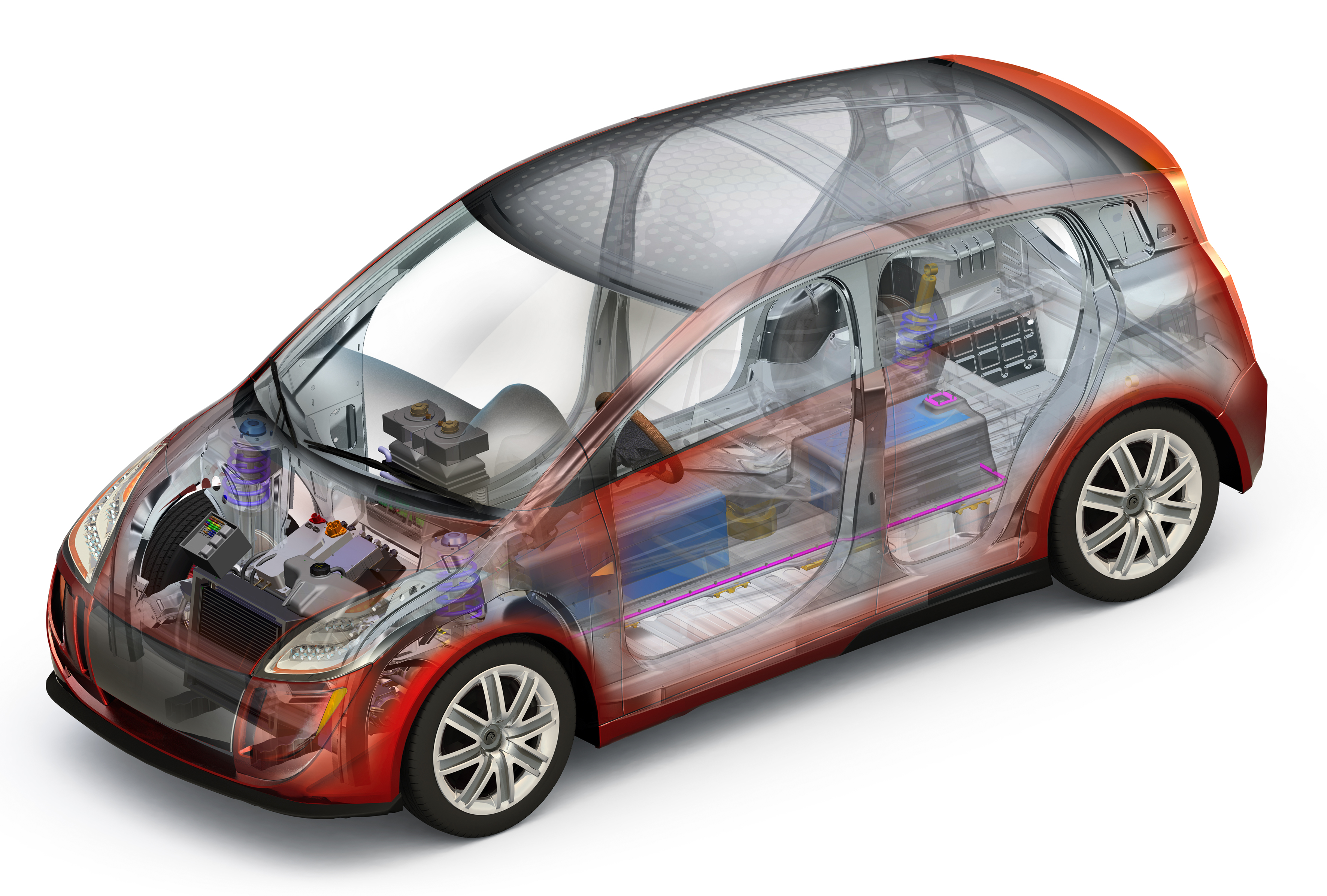Steel Markets

Auto Shows Showcase Lightweight Materials
Written by Tim Triplett
January 10, 2018
The tug-of-war between steel and aluminum for a greater share of the lucrative automotive materials market will be on full display beginning this week at the North American International Auto Show. The Detroit auto extravaganza will run from Jan. 13-28, showcasing the latest and greatest in automotive design as carmakers strive to wow consumers and meet challenging government safety and environmental standards at the same time.
Ducker Worldwide estimates that to achieve the needed fuel efficiency and lower CO2 emissions, automakers must reduce average vehicle weight by at least 7 percent by 2025. That will take an innovative blend of advanced high-strength steel and aluminum parts, along with other lightweight materials, in combination with powertrain advancements, experts say.

The Steel Market Development Institute (SMDI), whose mission is to promote steel as the material that offers the highest value to automakers, notes that more than 60 steel-intensive vehicles debuted at major automotive shows across the country in 2017. “With so many new steel-intensive vehicle debuts across key vehicle segments, it truly reinforces how advanced high-strength steel (AHSS) is driving innovation across the industry and helping automakers reach their lightweighting targets,” said Jody Hall, vice president of the automotive market for SMDI.
Through an intensive R&D effort over the past few decades, the steel industry has developed more than 200 different grades of high-strength steels. It wasn’t that long ago that cars and trucks used only mild steel. Today, mild steel makes up only about one-third and high-strength steels two-thirds of the vehicle content. High-strength steel is defined as material from about 300-500 megapascals (MPa). Advanced high-strength steels run from 500-1,000 MPa. The latest materials, ultra-high-strength steels, are those with strengths higher than 1,000 MPa.
Ducker Worldwide is expected to update its 2014 auto steel study this year. SMDI does not know exactly how much AHSS is going into today’s vehicles. As of 2014, the average vehicle contained 254 pounds of high-strength steel. “Each successive generation of vehicle uses more and more advanced high-strength steel. The automakers are really taking advantage of the steels’ properties and performance,” said David Anderson, SMDI’s senior director for automotive and long products.
Why so many grades? Because there are so many applications, for one. Each grade offers a different combination of strength and other properties, such as elasticity or formability. For another, carmakers use different approaches to achieve the same goal. Some might use a high-strength hydroformed tube, others a stamped press-hardened ring or a tailor-rolled blank to achieve structural integrity. “Automakers use different design philosophies to get the performance they want. Our steel members [mills] have adjusted their grades to make sure the automakers get the optimum performance and manufacturability at the lowest weight for each component system,” Hall said.
SMDI offers the following examples of how OEMs have applied high-strength steels in current models:
- 2018 Chevrolet Traverse is 300 pounds lighter through use of lighter-gauge high-strength steels.
- 2018 Honda Odyssey’s A-, B- and C-pillars, roof rails, floor rails, front body area, and front subframe are composed of high-strength steel.
- 2018 Volkswagen Atlas is built on the MQB chassis architecture, which boasts a large percentage of high-strength, hot-formed steel.
- 2017 Buick Lacrosse is composed of 26 percent high-strength low-alloy steel, 23 percent mild steel, 16 percent ultra-high-strength steel, 15 percent advanced high-strength steel, 9 percent bake-hardenable steel and 8 percent press-hardened steel.
- 2017 Chrysler Pacifica’s body structure is composed of 72 percent high-strength steel.
- 2019 Infiniti QX50 uses of super high-formability (SHF) 980 MPa high-tensile steel, which enhances safety and driving performance, while offering a 23 percent improvement in rigidity.
- 2018 Kia Stinger is composed of 55 percent advanced high-strength steel.
Since 2013, the aluminum industry has invested more than $2.3 billion in domestic plant expansions to support growing demand in the auto market. Last year, demand for aluminum in automotive applications was greater than at any point in history. No doubt, the aluminum industry could point to its own list of vehicle successes (perhaps even some of the same cars and trucks).
Steel and aluminum share a common interest in the government regulation that is driving the innovation, and the frustration, in the auto sector as carmakers struggle to achieve an average fleet fuel efficiency above 50 mpg by 2025. Some on both sides of the metals aisle are hoping their calls for an easing of federal mileage and emissions requirements will find a more receptive audience with President Trump. The Trump administration’s review of greenhouse gas emission standards is due April 1.

Tim Triplett
Read more from Tim TriplettLatest in Steel Markets

USW cheers Evraz NA agreement with Atlas Holdings
The United Steelworkers (USW) labor union celebrated recent news of the signed agreement between Atlas Holdings and Evraz NA in which the Connecticut-based private equity company said it plans to acquire North America’s Evraz facilities.

Steel buyer spirits tempered by soft spot market conditions
Steel sheet buyers report feeling bogged down by the ongoing stresses of stagnant demand, news fatigue, tariff negotiations or implementation timelines, and persistent macroeconomic uncertainty.

Hot-rolled coil buyers continue seeking certainty
Steel market participants contend that buyers will remain in “wait-and-see" mode until some market stability is restored.

Latin American steel advocates warn on cheap import flood
Subsidized Chinese steel imports and cheap steel products from Association of Southeast Asian Nations (ASEAN) entering Latin American (LATAM) are threatening the region's steel market.

CRU: Steel prices fall amid global demand weakness
The forceful headwinds bearing down on steel markets across the globe have created demand challenges and sent prices southward. The US, however, challenged the global trend.
